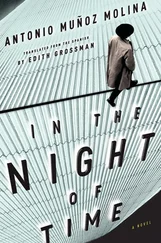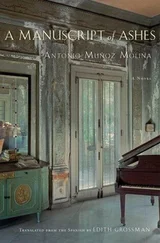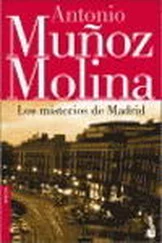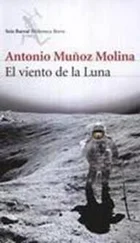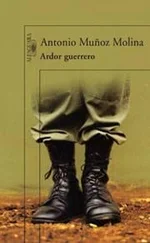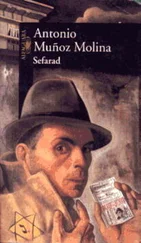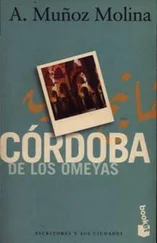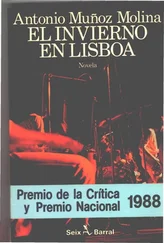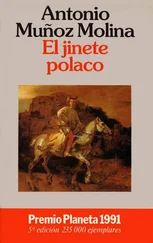The two of us walk along the wall of a large cemetery, which at first we took for a park. To the west you can imagine the vast stretches of the Hudson, then on a corner, where the cemetery ends, we see on the other side of the avenue, like a mirage, the building we’re looking for, imposing and neoclassic, equally as strange as we are in this place, the home of the Hispanic Society of America, where we’ve been told there are paintings by Velazquez and Goya and a huge library no one visits, because who will come here, so far from everything and in a neighborhood that from midtown Manhattan can easily be seen as devastated and unsafe.
Behind a fence are a patio and statues between two buildings with marble cornices and columns and Spanish names inscribed across the facades. There is an imposing equestrian statue of the Cid, and on one wall a large bas-relief of Don Quixote on Rosinante, horseman and steed equally defeated and skeletal. Beside the entrance a woman with her white hair pulled back and with a rumpled look smokes a cigarette with that half-stubborn, half-furtive attitude of American smokers who have to go outside to fill their lungs with smoke, protecting themselves against the cold wind behind some column or in the shelter of a building, taking quick puffs from the cigarette and then hiding it, fearful of the censure of people going by. The woman looks at us a moment, and later we will both remember those eyes shining like coals in her aged face, the eyes of a much younger woman. She is an employee or secretary nearing retirement, who lives alone and doesn’t care how she dresses, who cuts her hair without fuss and wears dark sweaters, men’s trousers, and shoes between orthopedic and running gear, and hangs her glasses on a chain about her neck.
In the vestibule we look in vain for a ticket office. A burly old doorman sitting with indifference in a convent chair indicates that we can go on through, and from his face, attitude, and accent in spoken English we know he is Cuban. He wears a gray uniform jacket resembling that of a Spanish guard, but one from many years ago and threadbare after long service, after many terms of sleepy administrative laissez-faire. The minute we step into the lobby we notice, with misgiving, that there is practically no one there, and the whole place is dilapidated. A sign affixed to the glass of the entry door gives the museum hours; it is printed in an old typeface and badly yellowed, obeying the same principle of time as the doorman’s jacket or the framed photographs in a glass case that document the founding, in the 1920s, of the Hispanic Society: the large black automobiles of the Spanish and American officials who attended the inauguration, views of a building that doesn’t exist now, arrogant and white in the classicism of its architecture, its recently polished marble gleaming with the splendor of the new and up-to-date, and with the promise of a triumphant future. In the sky, above heads covered with top hats and stylish straw chapeaux, is an airplane that at the time would have been as dazzlingly modern as the cars of the ladies and gentlemen attending the inauguration. But the photographs have warped, and on the inside corners of the frames you can see the work of silverfish.
We enter a dark gallery reminiscent of the patio of a Spanish palace, with plateresque carved-wood choir stalls and arches of a deep red stone that is even darker in the faint daylight filtering through the skylights. The space defies identification: it could be the patio of a palace opening on several galleries, or the enormous desanctified sacristy of a cathedral… or a museum shop not organized according to any clear principle. At the beginning of the century, the millionaire Archer Milton Huntingon, possessed of a passion for all of Spanish Romanticism and a man of an insatiable and omnivorous erudition, wandered through Spain buying everything, anything, whether the choir of a cathedral or a glazed earthenware water pitcher, paintings by Velazquez and Goya, bishop’s cassocks, Paleolithic axes, bronze arrows, the bloody Christs of Holy Week, heavy silver monstrances, Valencian ceramic tiles, illuminated parchments of the Apocalypse, a first edition of La celestina, the Diálogos de amor by Judá Abravanel, called León Hebreo, a Spanish-Jewish refugee in Italy, the 1519 Amadís de Gaula, the Bible translated into Spanish by Yom Tov Arias, the son of Levi Arias, and published in Ferrara in 1513 because it could not be published in Spain, the first Lazarillo, the Palmerín de Inglaterra in the same edition Don Quixote must have read, a first edition of La Galatea, the successive augmentations of the fearsome Index librorom prohibitorum, the Quixote of 1605, and a multitude of Spanish books and manuscripts that no one valued and that were sold at ridiculous prices to the man who traveled the impossible roads of Spain by automobile and lived in perpetual enchantment and enthusiasm. Consumed by a prodigious acquisitive greed, Mr. Huntington traveled here and there with his wild American energy through the dead, rural villages of Castile, following the route of the Cid, buying things and having them shipped to America, paintings, tapestries, ironwork, entire altarpieces, the detritus of high Spanish glory, relics of ecclesiastical opulence, but also objects of the everyday life of the people, pottery plates on which the poor ate their wheat porridge and the water jugs that allowed them the luxury of cool water in the dry interior. He directed archaeological digs in Italy and in one purchase bought the ten thousand volumes in the collection of the dead-broke Marqués de Jerez de los Caballeros. And to house the outlandish booty of his journeys through Spain, he constructed this palace at one end of Manhattan, which was never to be blessed with the prosperity or speculative fever he anticipated.
Everything is on the walls, in glass cases, in corners, always with a yellowing label giving the date and place of origin: Roman mosaics and oil lamps, Neolithic earthen bowls, medieval swords, Gothic virgins, like a flea market where all the testimony and heritage of the past has ended, washed up here in the convulsions of the great flood of time, refuse from the homes of the rich and the poor, the gold of the churches, the credenzas of the salons, the tongs that stirred the fires, and the tapestries and paintings that hung on the walls of churches now abandoned and sacked and palaces that may no longer exist, gravestones from the tombs of the powerful now worn nearly smooth, and marble fonts that held the holy water in the cool darkness of the chapels. And names, the sonorous names of Spanish communities on the labels in the cases, and among them, suddenly, beside a large green glazed bowl that I recognize immediately, the name of my hometown, where when I was a boy there was a community of potters whose kilns hadn’t been modified since the times of the Moors, all grouped on a sunny street called Calle Valencia that ended in open country. I point out the bowl to you behind the glass in one of the freestanding cases in the Hispanic Society of America. From this remote time and place it has taken me straight back to my childhood: in the center of the bowl is a rooster in a circle, and as I look at it I can almost feel the glassy surface of the glaze and the raised lines of the design on my fingertips, a timeless rooster that looks like one of Picasso’s and is also replicated on the plates and bowls in my home, as well as on the belly of the water pitchers. I remember the large bowls the women used for mixing ground meat and spices to make fresh sausage, the pottery plates on which they chopped the tomato and green pepper for the salads — austere and savory food of the common people and a standard subject of still lifes. Those objects had always been on the tables and in the cupboards of our houses, and it always seemed as if they had the status of a liturgical constancy, and yet they disappeared in only a few years’ time, replaced by the invasion of plastic and commercial pottery. They have vanished like the houses in whose dark shadow the generous curves of that pottery shone, vanished like the people who once inhabited those houses.
Читать дальше

